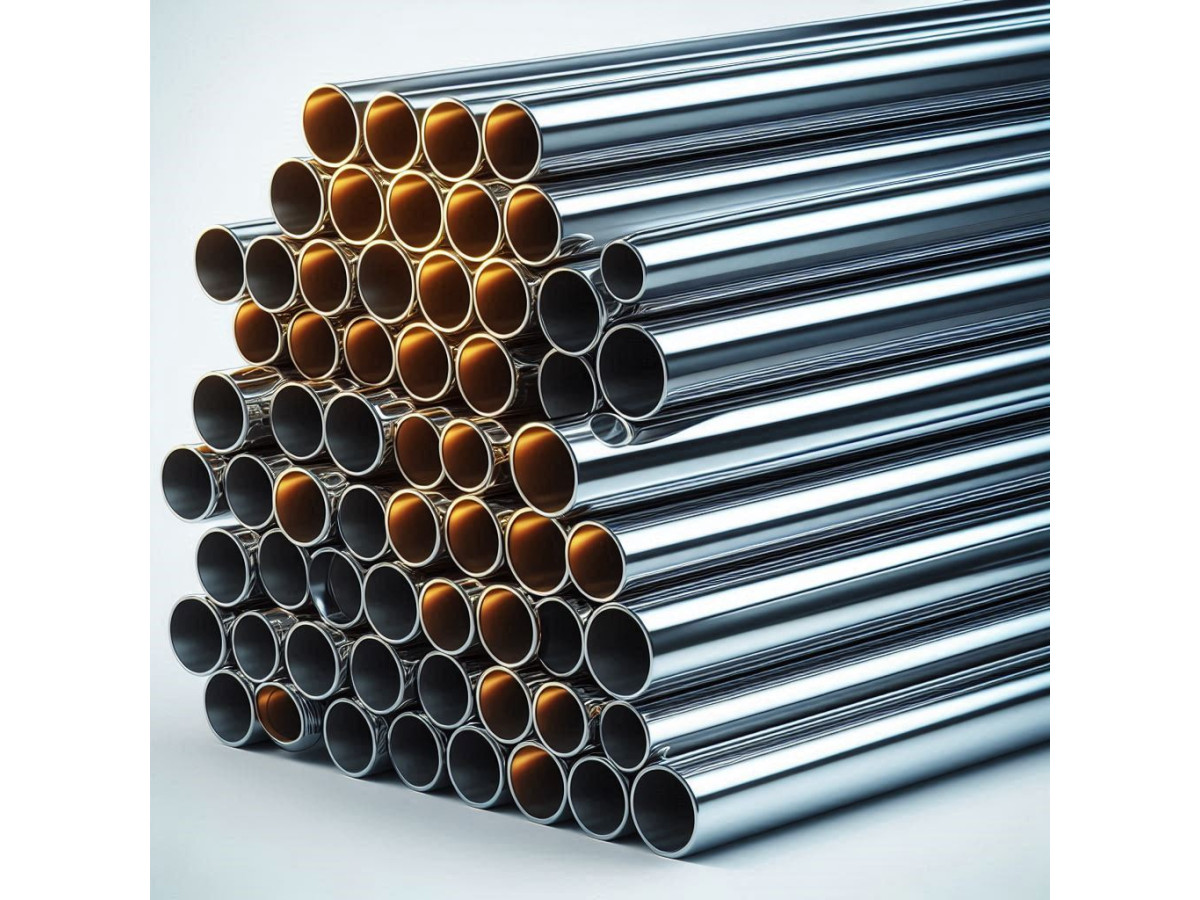Hot rolled round pipe is a cylindrical hollow section made from steel sheet or billet by hot rolling. This process involves heating the workpiece to high temperatures and deforming it through rolling machines to obtain the desired shape and size.
Product characteristics
Thanks to hot rolling, pipes are characterized by high strength and can withstand significant loads. Also, the features of this type of rolled metal include:
- durability;
- heat resistance;
- flexibility and plasticity;
- weldability.
Resistance to corrosion and mechanical damage increases the service life of pipes. The ability to deform without breaking simplifies installation and operation.
The diameters of hot-rolled round steel pipes vary from 6 mm to 1600 mm. The choice is determined by operating conditions. Large diameter pipes (from 50 mm) are used for pipelines. For frames - medium (from 25 mm to 100 mm). Small diameter pipes (up to 25 mm) are suitable for furniture.
Wall thickness ranges from 0.5 mm to 40 mm. Lightweight structures, where efficiency and weight are important, are created using rolled metal with walls up to 2 mm. Standard operating conditions, such as water supply and heating, allow you to select pipes from 2 to 5 mm. Highly loaded structures, often found in the oil and gas industry and energy, require the use of rolled metal with maximum wall thickness.
The length of the pipe can be fixed or arbitrary, depending on customer requirements and production conditions.
Product varieties
Hot-rolled round steel pipes are classified into two main types depending on the presence of a seam: seamless and welded. The former are made from a solid billet (ingot or bloom), which is heated and pulled through special rolling machines, forming a hollow pipe without a weld. As a result, the product has a homogeneous structure. The absence of a seam eliminates the risk of rupture or corrosion, so this rolled metal is considered more reliable. Seamless pipes can withstand high temperatures and pressures, making them ideal for harsh environments.
Seam pipes are made from steel sheet or strip, which is rolled into a cylindrical shape and then welded along the longitudinal seam. After welding, the product is subjected to heat treatment and rolling to improve its mechanical properties. The seam in such pipes can be straight or spiral. In the first case, it is characterized by increased strength, therefore it is used in the manufacture of large-diameter structures. In the second, the advantage is manufacturability in production. Both types of rolled metal can be found at the link https://ukrstarline.ua/ru/chernyj-metalloprokat/stalnaya-truba/stalnaya-truba-goryachekatanaya-kruglaya.
Application area
Due to their strength and reliability, hot-rolled round steel pipes are ideal for the construction of building frames and structures. Water, sewer, heating and gas pipelines are often made from the same materials. Hot-rolled pipes are used to make fences, gates, fences and other landscaping elements. They are often used to create support structures. Pipes must withstand significant loads and ensure the durability of structures. For outdoor use, galvanized metal is often used.
This type of pipe is required for the production of shafts, axles, cylinders and other mechanical components. They are used in pressure transmission systems such as hydraulic cylinders and pneumatic piping. In the field of mechanical engineering, rolled metal must have high dimensional accuracy and a uniform structure to ensure reliable operation of mechanisms. Wear resistance is important for long-term use under friction and stress.
Round steel pipes are used to create irrigation systems to water crops. They are also used to transport water on farms. Pipes must be resistant to corrosion and mechanical damage in open air conditions. Long-term operation without the need for frequent replacement is important.
Rolled metal is often used in the oil and gas industry to create main pipelines and drilling rigs. Often, hot-rolled pipes are purchased for use in public utilities. Here they are needed for the arrangement of central heating and hot water supply systems, installation of pipelines transporting drinking water.

